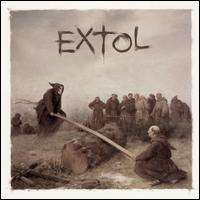
Synergy (Shaman's Harvest album)
Synergy is the second studio album by hard rock band Shaman's Harvest. It was released on April 28, 2002.
Track listing
References

List of Source engine mods
This is a selected list of Source engine mods (modifications), the game engine created by Valve Corporation for most of their games, including Half-Life, Team Fortress 2, and Portal, as well as licensed to third parties. This list is divided into single-player and multiplayer mods.
Single-player mods

Synergy (Extol album)
Synergy is the third studio album by Norwegian Christian extreme metal band Extol. It was released in 2003 on Century Media, but was licensed to Solid State Records.
With this album, the band shifted more towards a technical death/thrash sound. The Norwegian singer-songwriter Maria Solheim performs guest vocals on "Paradigms". The session guitarist Tore Moren plays guitar solo on "Nihilism 2002" and the first solo on "Psychopath". Samuel Durling of the death industrial band Mental Destruction performs distorted vocals on "Emancipation".
The album was recorded at Top Room Studios. It was produced by Børge Finstad and was mixed at Fagerborg Studios and Top Room Studios. Morten Lund mastered the album at Masterhuset AS. The album cover was painted by Hugh Syme, who has done work for such groups as Iron Maiden, Megadeth, Rush and Fates Warning. The band says that the cover picture "illustrates the synergy effect of elements working together (monk and Death) and thus gaining strength beyond what the effect would be if all the elements would be working separately."

PGM-11 Redstone
The PGM-11 Redstone was the first large American ballistic missile. A short-range ballistic missile (SRBM), it was in active service with the United States Army in West Germany from June 1958 to June 1964 as part of NATO's Cold War defense of Western Europe. It was the first missile to carry a live nuclear warhead, in the 1958 Pacific Ocean weapons test, Hardtack Teak. Chief Engineer Wernher von Braun personally witnessed this historic launch and detonation.
Redstone was a direct descendant of the German V-2 rocket, developed by a team of predominantly German rocket engineers brought to the United States after World War II as part of Operation Paperclip. The design used an upgraded engine from Rocketdyne that allowed the missile to carry the W39 warhead which weighed 6,900 pounds (3,100 kg) with its reentry vehicle to a range of about 175 miles (282 km). Redstone's prime contractor was the Chrysler Corporation.
A major effort to improve Redstone's reliability produced one of the most reliable rockets of the era. Dubbed "the Army's Workhorse", it spawned an entire rocket family which had an excellent launch record and holds a number of firsts in the US space program, notably launching the first US astronaut. It was retired by the Army in 1964 and replaced by the MGM-31 Pershing. Surplus missiles were widely used for test missions and space launches, including the first US man in space, and in 1967 the launch of Australia's first satellite.

Redstone Building
The Redstone Building, also known as the Redstone Labor Temple (and formerly called "The San Francisco Labor Temple") was constructed and operated by the San Francisco Labor Council Hall Associates. Initial planning started in 1910, with most construction work done during 1914. Its primary tenant was the San Francisco Labor Council, including 22 labor union offices as well as meeting halls. The building was a hub of union organizing, work activities and a "primary center for the city's historic labor community for over half a century."
The Redstone building played a significant role in the 1917 United Railroads Streetcar Strike as well as the San Francisco maritime strike that led to the 1934 San Francisco General Strike for better working conditions for all workers. The Redstone has been designated San Francisco's 238th landmark.
Context and history
The Redstone is located at 2940 16th Street between South Van Ness, formerly Howard Street, and Capp. The building is situated on the very edge of what used to be an industrial zone, with large industrial facilities like the U.S. Steel facility, now a MUNI facility. The city also built a large armory two blocks away as part of the city's politically divisive labor history.

Redstone (rocket family)
The Redstone family of rockets consisted of a number of American ballistic missiles, sounding rockets and expendable launch vehicles operational during the 1950s and 60s. The first member of the family was the PGM-11 Redstone missile, from which all other members were derived. The first large U.S. rocket, modified Redstones launched America's first Earth satellite and first two astronauts. Named for the Redstone Arsenal in Huntsville, Alabama where it was developed.
PGM-11 Redstone
First launched in 1953, the PGM-11 Redstone was a short-range surface-to-surface ballistic missile in active service with the U.S. Army from June 1958 to June 1964; and was used for the first U.S. live nuclear missile tests. It was built by Chrysler for the United States Army Ballistic Missile Agency (ABMA) and was deployed in West Germany.
Jupiter-A
Jupiter-A was the first variant of Redstone, used to test components later used in the PGM-19 Jupiter medium-range ballistic missile.
Jupiter-C
Podcasts:

